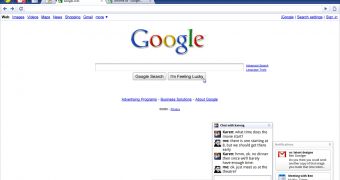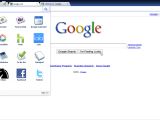Google has just unveiled its hugely anticipated, web-based operating system, Google Chrome OS. As expected, Google hasn't actually launched the operating system, but it has released the source code in its current state for developers to have a chance to start working on it. From now on, the code will remain open for third-party developers to build and modify. Google wants the actual operating system and the accompanying hardware to be ready for launch in time for the holiday season next year.
As Google stated when it first revealed that it was working on its very own OS, Chrome OS will be completely web-based. There will be no native apps for it, even the tools that will be built by Google and bundled with the OS will be web apps. In a simplified view, Chrome OS is just a specialized version of its browser Chrome running on top of an optimized Linux kernel.
There have been a number of modifications done to Chrome in order to make it function as a full-blown operating system. One of the things Google has introduced consists of persistent application tabs, which will always be available to the user and are fully customizable. Apps can also be run in a "panel" that is a persistent light-weight window, which sits on top of the browser designed for apps like instant messengers. One example of use is a Notepad tool that comes with the operating system and that saves the files in the cloud.
One very interesting aspect of the new OS is that, in fact, all of the user files and also data like settings and personalizations will be synced back to the cloud. This way, users can log into a Chrome OS machine with their accounts and get their own desktop, applications and customizations just like using their own machines.
One of the biggest questions that popped up when Google announced the OS was how it intended to handle all of the various hardware peripherals available. Now, Google has announced that most common types of hardware will be supported. All input devices will have built-in support and Chrome OS will also handle storage devices like cameras or SD cards. When a storage device is plugged into the machine a list of the files and directories on the device will be available in a new tab in Chrome. Users will then be able to view common media files like photos, music files or videos either in a new tab, in the case of photos, or in a panel window for videos. Printer support is also coming, but Google said it would have more details on that at a later date.
The focus for now is to get the OS ready for launch next year and netbooks are the only target devices at the time. Google will work closely with hardware manufacturers and all the products that will ship with Chrome OS next year will be certified by the company. However, the devices aren't exactly the netbooks we have today, Google wants them to have larger screens and a full-sized keyboard. Another interesting requirement is that all devices will be required to have only SSD drives. The focus for now is to get the product on the market and other form-factors may be supported, but after 2010.

 14 DAY TRIAL //
14 DAY TRIAL // 
